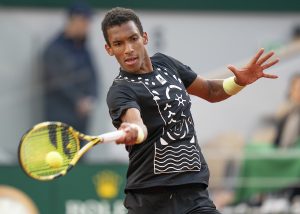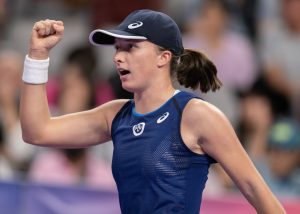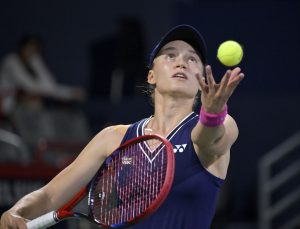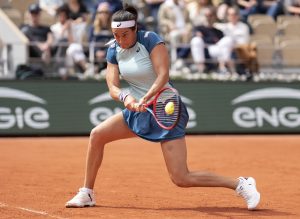It was a glorious moment. Casper Ruud mishit the backhand wide and Thiago Seyboth Wild fell to the ground, hands on his head. The 19 year-old Brazilian had won his first ATP Tour title out of nowhere.
Seyboth Wild had never and was World No. 182 before the start of the tournament. He had some success on the Challenger Tour, having lifted the trophy at a Challenger singles event in Guayaquil with a dominant 6-4 6-0 victory over Hugo Dellien the previous November.
But, nothing could compare to a maiden ATP Tour crown. This was supposed to be a sign that Thiago Seyboth Wild had arrived. That, yes, he wasn’t in the top 100 yet, even with the title he was still World No. 113, but that he would be a mainstay at the highest level of tennis soon.
The title came in March and it’s December now. Thiago Seyboth Wild has still not reached the top 100. So what happened?
While Seyboth Wild first broke through at the Challenger level when he beat Dellien, on the ATP stage, pre-hiatus 2020 was his moment in the sun.
While he started the season 0-3, including a concerning first-round Challenger loss in Punta del Este to Hernan Casanova, once Seyboth Wild got his feet back in Brazil, he was a different player.
The Brazilian played rising star Alejandro Davidovich Fokina in the first round of the 500 event in Rio de Janeiro in an epic three set match. The match was very contentious, with many twists-and-turns, ultimately ending in a 5-7 7-6(3) 7-5 victory for Seyboth Wild.
And while Seyboth Wild would lose his next match to Borna Coric in a third set tiebreak, the fact that he was even within striking distance of the Top 35 Croatian was a positive sign. His huge, heavy forehand was firing, which was a good sign heading into his next tournament in Santiago.
At the final stop of the clay court Golden Swing, the ATP 250 event in Santiago, Seyboth Wild only dropped set on his way to the title. On the way, he took down No. 1 seed Cristian Garin (although via a retirement after the first set) and recent Argentina Open champion Casper Ruud.
Seyboth Wild proclaimed to the ATP following the match, “…It’s always something I dreamed about. I need to just take the best from the week and keep on going for the rest of the season.”
Unfortunately, the rest of Seyboth Wild’s season was riddled with disappointment.
With the exception of a single Davis Cup match, Santiago was the last time the Brazilian was seen on court until September. His positive momentum brought to a halt by the coronavirus pandemic.
And when Seyboth Wild returned, he was never able to truly recapture the level of depth, and control over his groundstrokes that had given him such a boost in Santaigo.
The Brazilian lost in the first round of the US Open to Dan Evans. Then he had a flash of hope, making the final of the Aix en Provence Challenger, but falling to Oscar Otte.
However, any form of success post-pandemic would end there, as it would be a miserable end to the season for Seyboth Wild. He would lose the last seven matches of the season. This included a loss to fellow Brazilian youngster Orlando Luz and a quick 6-1, 6-3 defeat to Alejandro Tabilo to round out the season, at least on the Challenger level.
It’s important to highlight these two matches in particular because they show the conundrum that Seyboth Wild was in. He clearly cared in both matches, it was not as if he was mentally checked out. Yet, in both matches, despite how much he wanted to win, his game let him down.
Spraying regulation groundstrokes from the baseline, getting out-foxed in cat-and-mouse points, and not serving at a high level whatsoever, Seyboth Wild showcased very little of the form that saw him lifting the trophy in Santiago just months earlier.
Seyboth Wild’s seven-match losing streak, all on clay, showcases the fragility of success at the top of tennis.
The Brazilian, at only 19 years of age, won an ATP title without a lot of prior success at that level. And even at the Challenger level, he had only won a singular title. In other words: he didn’t have a huge base of high-quality play against top opposition before that first ATP title.
Now, this isn’t to take away from what Seyboth Wild accomplished. A player like Julien Benneteau would probably give up a lot to have that Santiago winner’s trophy in his grasps. But, a player like Seyboth Wild is a reminder that expectations shouldn’t change too much after a couple good weeks. That sustaining success is often more impressive than an initial breakthrough.
The past seven matches have been a reality check for Thiago Seyboth Wild. A dose of the realization that his game is still not ready for the week-in and week-out grind of the ATP Tour, despite a couple good weeks.
That his forehand is not consistent enough to win week after week. That he needs to beef up his serve, despite being relatively short at 6’1″. He needs to focus a but less on power and a bit more on control.
But, it’s important to note that he has only played 14 matches on the main tour and played in one grand slam main draw at this point. And there’s so much tennis ahead of the young Brazilian.
And that’s the point. Seyboth Wild is still so green, so inexperienced, that it’s going to be hard for him to have Jannik Sinner-esque production at such a young age. And us, as tennis fans, should realize that Sinner is the exception, not the norm. Especially for a player like Seyboth Wild, with such a relatively limited repertoire of success below the ATP level (for a title winner).
Thiago Seyboth Wild talked about the need to “keep on going for the rest of the season.” Well, pandemic aside, that didn’t go according to plan.
But, maybe this reality check is exactly what Seyboth Wild needed to take his game to the next level.
Main Photo from Getty.






